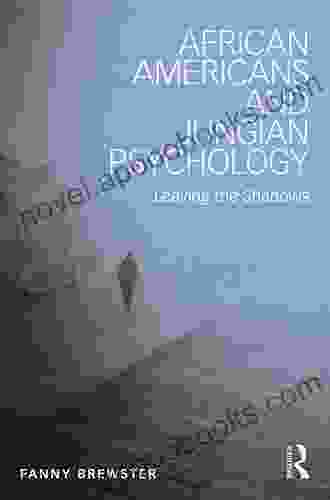Unveiling the Interwoven Threads: Colonialism's Legacy on Indigenous Health and Culture in Hawai'i, 1778–1855

The annals of history bear witness to the profound impact that colonialism has wrought upon indigenous communities worldwide. Colonial powers, driven by a thirst for dominion and economic gain, have inflicted immeasurable harm upon the health, culture, and sovereignty of indigenous peoples. Hawai'i, once a vibrant Polynesian kingdom, is no exception to this tragic narrative.
This comprehensive article delves into the intricate web of Colonialism Indigenous Health And Culture In Hawai 1778 1855 Studies In North, meticulously examining the devastating effects of foreign occupation on the well-being and cultural fabric of the indigenous Hawaiian people. Drawing upon rigorous historical research and insightful analysis, this article illuminates the profound challenges faced by Hawaiians during this tumultuous period and sheds light on their remarkable resilience and determination to preserve their identity.
5 out of 5
| Language | : | English |
| File size | : | 8902 KB |
| Text-to-Speech | : | Enabled |
| Screen Reader | : | Supported |
| Enhanced typesetting | : | Enabled |
| Print length | : | 298 pages |
The Arrival of European Colonizers
The year 1778 marked a pivotal moment in Hawaiian history. Captain James Cook, a renowned British explorer, arrived in the archipelago with an entourage of ships and seasoned sailors. While Cook's initial encounters with the Hawaiians were characterized by curiosity and awe, his subsequent visits sowed the seeds of profound transformation.
As the European presence grew, so too did the of foreign diseases, such as smallpox, measles, and influenza. These diseases, to which the Hawaiians had no prior immunity, ravaged the population, decimating communities and undermining the traditional Hawaiian healing practices.
Missionaries and Cultural Transformation
In the early decades of the 19th century, missionaries from the United States arrived in Hawai'i with the avowed mission of spreading Christianity. While the missionaries initially sought to convert the Hawaiians to their faith, their influence extended far beyond the realm of religion.
Through their schools and printing presses, the missionaries exerted a powerful force on Hawaiian society. They introduced new forms of education, clothing, and customs, which gradually eroded traditional Hawaiian culture. The missionaries also played a significant role in consolidating political power in the hands of a select group of Hawaiian chiefs, further eroding indigenous autonomy.
Economic Exploitation and Labor Coercion
As Hawai'i became increasingly embroiled in the global capitalist system, the indigenous people were subjected to relentless economic exploitation. Western powers, eager to secure the archipelago's strategic location and abundant resources, established sugar plantations and other industries that relied heavily on Hawaiian labor.
Hawaiians were coerced into working under harsh conditions, often for meager wages or in exchange for goods that were often overpriced. The plantation system, in particular, had devastating consequences for Hawaiian families, separating spouses and children and undermining traditional subsistence practices.
Health Disparities and Societal Fragmentation
The cumulative impact of colonialism on Hawaiian health and well-being was profound. Foreign diseases, coupled with malnutrition and unsanitary living conditions, led to a sharp decline in the Hawaiian population. By the mid-19th century, the Hawaiian population had plummeted to a fraction of its pre-contact size.
Furthermore, the of Western medicine and healthcare systems created a stark divide between the indigenous elite, who had access to modern medical care, and the vast majority of Hawaiians, who were denied such access. This disparity further exacerbated health inequalities and contributed to the fragmentation of Hawaiian society.
Indigenous Resistance and Cultural Preservation
Despite the overwhelming odds they faced, the Hawaiian people exhibited remarkable resilience and determination in the face of colonial adversity. They actively resisted foreign domination, both through armed conflict and nonviolent forms of resistance. They also took steps to preserve their cultural heritage, establishing secret societies and maintaining traditional practices.
In the mid-19th century, a new generation of Hawaiian leaders emerged, led by King Kamehameha III and his advisers. These leaders recognized the need to adapt to the rapidly changing world while safeguarding their indigenous culture. They negotiated treaties with Western powers, established a constitutional monarchy, and implemented reforms aimed at improving the health and well-being of their people.
The period from 1778 to 1855 was a watershed moment in Hawaiian history, a time of profound transformation marked by both tragedy and resilience. The arrival of European colonizers and missionaries brought about a radical shift in Hawaiian health, culture, and society.
Through meticulous research and analysis, this article has shed light on the devastating impact of colonialism on Indigenous health and culture in Hawai'i. It has also highlighted the remarkable spirit of resistance and cultural preservation exhibited by the Hawaiian people. Their story serves as a poignant reminder of the resilience of the human spirit and the enduring legacy of colonialism.
As we navigate the complexities of the present day, it is imperative to continue exploring the historical roots of health disparities and cultural loss among indigenous communities. By understanding the lessons of the past, we can work together to build a more just and equitable future for all.
Image Descriptions
- Alt-text for Image 1: A vintage photograph depicting a group of Hawaiian women working in a sugar cane field, their faces etched with exhaustion.
- Alt-text for Image 2: A photograph of a Hawaiian hula dancer performing a traditional dance, her movements graceful and fluid.
- Alt-text for Image 3: A photograph of a group of Hawaiian children attending a mission school, their faces filled with curiosity and determination.
5 out of 5
| Language | : | English |
| File size | : | 8902 KB |
| Text-to-Speech | : | Enabled |
| Screen Reader | : | Supported |
| Enhanced typesetting | : | Enabled |
| Print length | : | 298 pages |
Do you want to contribute by writing guest posts on this blog?
Please contact us and send us a resume of previous articles that you have written.
 Book
Book Novel
Novel Page
Page Chapter
Chapter Text
Text Story
Story Genre
Genre Reader
Reader Library
Library Paperback
Paperback E-book
E-book Magazine
Magazine Newspaper
Newspaper Paragraph
Paragraph Sentence
Sentence Bookmark
Bookmark Shelf
Shelf Glossary
Glossary Bibliography
Bibliography Foreword
Foreword Preface
Preface Synopsis
Synopsis Annotation
Annotation Footnote
Footnote Manuscript
Manuscript Scroll
Scroll Codex
Codex Tome
Tome Bestseller
Bestseller Classics
Classics Library card
Library card Narrative
Narrative Biography
Biography Autobiography
Autobiography Memoir
Memoir Reference
Reference Encyclopedia
Encyclopedia Phyllis M Newman
Phyllis M Newman Victoria Villa
Victoria Villa Pete Hegseth
Pete Hegseth Rowan Williams
Rowan Williams University Press
University Press Timothy Janovsky
Timothy Janovsky Sir Reed A Lott
Sir Reed A Lott Jill Sanders
Jill Sanders Quraisha Dawood
Quraisha Dawood Peter Swan
Peter Swan Roland Pietsch
Roland Pietsch Slime Green Beats
Slime Green Beats Peter J Hasson
Peter J Hasson Valerie M Pontbriand
Valerie M Pontbriand Rick Campbell
Rick Campbell Dick Morris
Dick Morris Markus Prior
Markus Prior Rob Clewley
Rob Clewley Thomas Davis
Thomas Davis Rachel Beyer
Rachel Beyer
Light bulbAdvertise smarter! Our strategic ad space ensures maximum exposure. Reserve your spot today!

 Herman MitchellStitch Your Way to a Dreamy Wedding with 'Wedding Day Sampler Cross Stitch...
Herman MitchellStitch Your Way to a Dreamy Wedding with 'Wedding Day Sampler Cross Stitch...
 Reed MitchellImmerse Yourself in a Symphony of Delights: Explore "All New Piano Solos by...
Reed MitchellImmerse Yourself in a Symphony of Delights: Explore "All New Piano Solos by... Devin CoxFollow ·7.7k
Devin CoxFollow ·7.7k Forrest BlairFollow ·19.6k
Forrest BlairFollow ·19.6k E.M. ForsterFollow ·12.7k
E.M. ForsterFollow ·12.7k Xavier BellFollow ·4.1k
Xavier BellFollow ·4.1k Zadie SmithFollow ·19k
Zadie SmithFollow ·19k Rob FosterFollow ·18.5k
Rob FosterFollow ·18.5k Ralph EllisonFollow ·16.4k
Ralph EllisonFollow ·16.4k Chuck MitchellFollow ·6.2k
Chuck MitchellFollow ·6.2k

 Shaun Nelson
Shaun NelsonUnlocking the Intricate Nexus: The Globalization and the...
In an era marked by...

 Robin Powell
Robin PowellLast Summer at the Golden Hotel: A Captivating Journey of...
Synopsis: A Transformative Summer at...

 Gabriel Mistral
Gabriel MistralContracts And Conmen In Europe Scramble For Africa
The late 19th and early...

 Glenn Hayes
Glenn HayesThe Story of the United States' Longest Wildcat Strike: A...
Prologue: The...

 Evan Hayes
Evan HayesBritain Empire Resistance Repression And Revolt:...
: The Tapestry of...

 Eddie Bell
Eddie BellGreen's Operative Hand Surgery: The Ultimate Guide for...
Green's Operative Hand Surgery is the...
5 out of 5
| Language | : | English |
| File size | : | 8902 KB |
| Text-to-Speech | : | Enabled |
| Screen Reader | : | Supported |
| Enhanced typesetting | : | Enabled |
| Print length | : | 298 pages |








